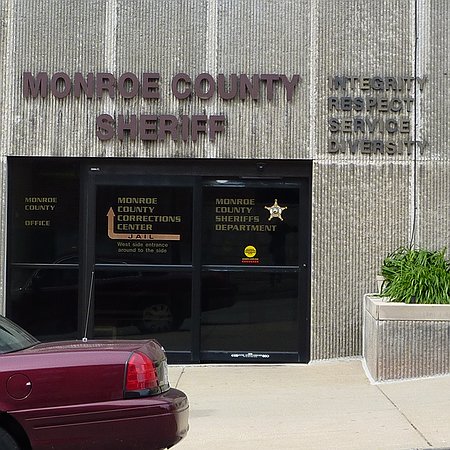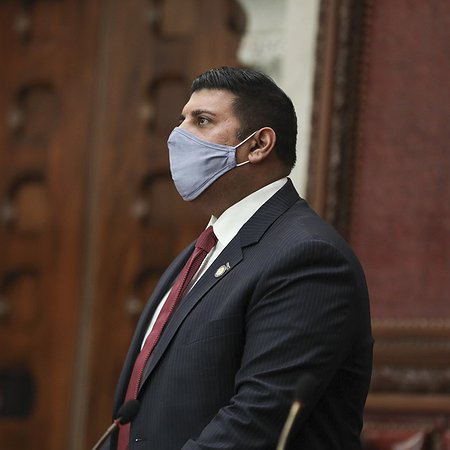Report Finds Media Coverage Of Pretrial Reform Fell Short
A report from the CUNY Institute for State & Local Governance found that media coverage of pretrial reform was “incomplete, and in some cases, inaccurate."
The Briefing

A report from the CUNY Institute for State & Local Governance found that media coverage of pretrial reform was “incomplete, and in some cases, inaccurate” and that skewed coverage spiked ahead of key legislative and budgetary dates, “suggesting media coverage likely contributed to mounting public pressure to revise the reforms” in ways that opened the door for more pretrial incarceration.
The research is yet another example that demonstrates the way sensational and cynical news coverage undermines public safety by misleading readers about the effects of common sense criminal justice reforms.
The media continues to mislead its audience
The ISLG report analyzes 554 articles over a 2.5-year period from 2019 to 2022. The report’s five core findings align closely with patterns that Justice Not Fear and other media watchdog groups have observed since 2019.
1. The media fails to explain what pretrial reform actually did, and the legislative intent behind the law.
ISLG found that the vast majority of media coverage (80 percent) did not describe why legislators passed pretrial reform – to create more justice in a two-tiered system that disproportionately punishes Black and brown New Yorkers and regularly causes preventable deaths. Instead, many articles failed to provide any context besides using “bail reform” as a boogeyman to scare New Yorkers. Other articles misstated what the laws actually do. A common example is stories that falsely claim pretrial reform “eliminated judicial discretion” while ignoring all the ways judges continue to possess wide discretion to set bail on eligible offenses and determine the least restrictive measures to ensure someone’s return to court.
2. The media skews towards coverage of “perceived negative consequences of the reforms, with little coverage of perceived benefits”.
Pretrial reform is intended to enhance public safety by reducing the devastating harms of pretrial incarceration, which include increased likelihood of recidivism, housing security, economic inequality, and death. However, media coverage of pretrial reform rarely covered this positive effect of bail reform, instead lifting up false claims that bail reform would result in more recidivism and increased crime. Some 75 percent of articles – like this article featuring the Schenectady police chief – focused on perceived negative consequences of pretrial reform, and of those articles, 80 percent failed to discuss any public safety benefits of pretrial reform. Meanwhile, just 6 percent of the articles in the study mentioned bail reform as a tool to reduce racial disparities in New York’s pretrial detention population – a key goal of the legislation. Not only do these articles mislead the public by falsely tying bail reform to increased crime (real or perceived), the coverage fails in its watchdog function by not evaluating pretrial reform based on its legislative intent.
3. The media misleads the public by tying rising crime to pretrial reform without evidence.
There exists extensive research demonstrating no relationship between increased crime and pretrial reform. The ISLG report indicates that media outlets are willfully ignoring this fact, instead choosing to lie to the public by connecting crime and bail reform. Over a quarter of the articles analyzed in the sample discuss crime rates and many of those articles falsely tie crime rates with pretrial reform. Despite the fact that these lies have been debunked time and again, media coverage “often did not cite any research or studies demonstrating correlations between crime and pretrial release.”
4. The media latches on to sensational stories that often have nothing to do with pretrial reform to falsely imply pretrial reform has “problems”
Media outlets routinely amplify lies from law enforcement officials and pro-carceral interests who falsely claim an instance of harm happened because of pretrial reform. The report finds that 75 percent of articles that mention a specific case “explicitly claimed” that the person involved was released because of pretrial reform, but rarely did those articles state information that would allow a reader to determine whether that was actually true. Media coverage focused on sensational stories of “rearrests after release for violent person-related charges” even though these stories often had nothing to do with bail reform and the fact that pretrial rearrest rates for violent crimes remain exceptionally low.
5. The media uses stigmatizing and dehumanizing language to suggest “guilt and inherent dangerousness” of people charged with crimes
Coverage of pretrial reform often amplifies inhumane language about people charged with crimes that helps to justify the horrors of pretrial detention. Pro-carceral voices rationalize the indefinite pretrial caging of people – who are presumed innocent and often did not harm anyone – by dehumanizing them and attempting to convince the public that people alleged to have committed crimes are unworthy of due process and basic human rights. The report found that over a quarter of all articles used stigmatizing language and more than half of all articles focused on a person’s criminal history, a misleading trope that creates the impression of guilt and reinforces the flawed carceral logic that more arrests will solve systemic problems.
6. Media coverage that criticized pretrial reform spiked ahead of key legislative and budgetary deadlines
While the ISLG report stops short of making a causal claim about the connection between media coverage and bail reform rollbacks, multiple studies show how media coverage and framing of bail reform in New York has played a key role in undermining support for bail reform. Sensationalized stories, disproportionate media coverage, and unchecked repetition of lies from elected officials all combine to mislead the public about the ongoing success of bail reform. The report does show how nearly all the rollback proposals considered by legislators “aimed to address concerns voiced in media coverage” like dangerousness and judicial discretion. Governor Hochul herself admitted that her own fear of seeing sensational headlines in outlets like the New York Post contributed to her decision to push for a misguided rollback to bail reform laws. This is the natural outcome of the naked cynicism and lies that dominate coverage of pretrial reform in New York.
Reimagining public safety reporting
In this environment, it is critical to follow facts, and not fear. Pretrial reform in New York has been wildly successful by any objective measure, reducing harm to communities by protecting the freedom of vulnerable New Yorkers at no cost to public safety while saving the state hundreds of millions of dollars. Media outlets would do well to reimagine what “public safety” reporting is, resisting sensationalism and spokesmanship for carceral interests in favor of nuanced reporting that serves communities by covering the full range of what harm and public safety looks like.







